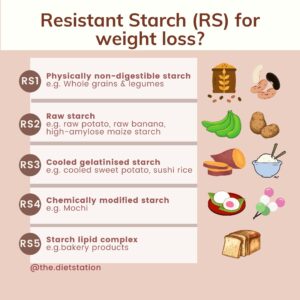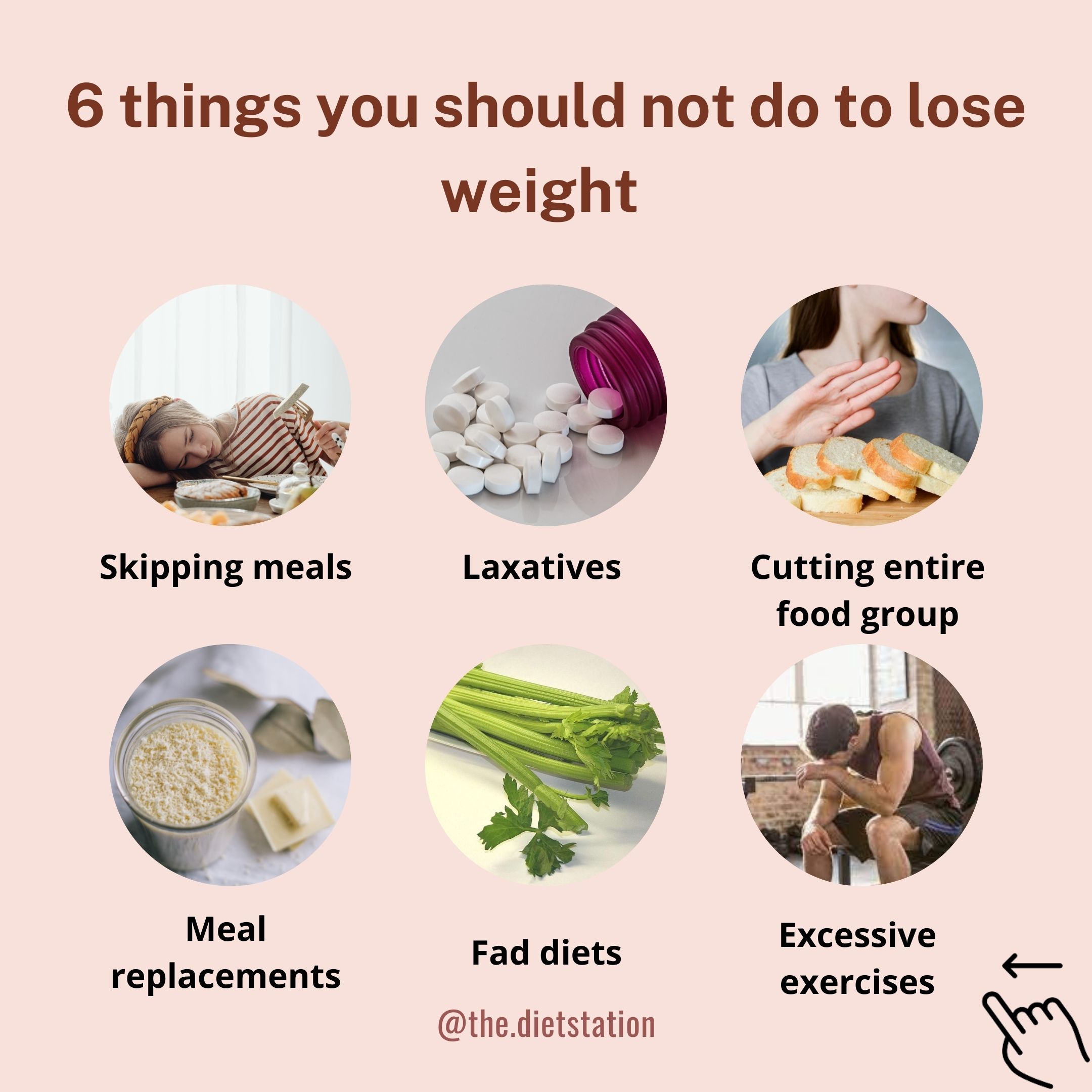Resistant starch resists digestion in the small intestine which has similar characteristics of both soluble and insoluble fibre [1]
Compare to starch foods (1g = 4kcal), 1g resistant starch = ~2.8kcal. This is the reason why people said resistant starch is helpful for weight loss. However, if you overeat any foods, you will gain weight.
5 types of resistant starch [2]:
🌰RS I = physically non-digestible starch
Starch is in the endosperm of cereal grains or seeds
🥔RS II = raw starch found in raw potato, raw banana, High-amylose maize/ corn starch
After cooking, most of the starch, such as that in baked potato and cooked banana, becomes highly digestible
🍣RS III = cooled gelatinised starch (retrogradation)
Found in cooked and cooled starchy foods (potato, sweet potato, sushi rice, corn, pasta, yam), but not reheating
🍡RS IV= chemically modified starch
eg. mochi
🍞RS V = starch lipid complex (mixed corn starch with fatty acid e.g. stearic acid) – It is recognised as a new type of RS
A study has shown RS V could be used for the preparation of low calorie, low-fat bakery products without quality changes [3]

[1] Available from: https://www.csiro.au/en/research/health-medical/nutrition/resistant-starch
[2] Birt DF, Boylston T, Hendrich S, Jane JL, Hollis J, Li L, McClelland J, Moore S, Phillips GJ, Rowling M, Schalinske K. Resistant starch: promise for improving human health. Advances in nutrition. 2013 Nov;4(6):587-601.
[3] Lee HS, Kim KH, Park SH, Hur SW, Auh JH. Amylose-lipid complex as a fat replacement in the preparation of low-fat white pan bread. Foods. 2020 Feb;9(2):194.



